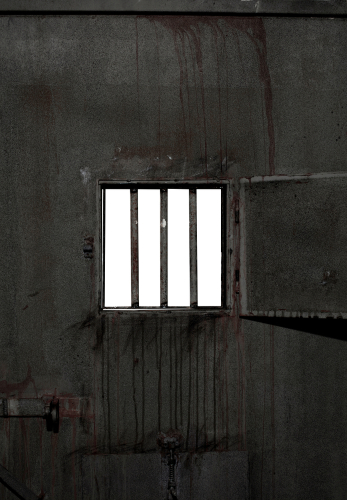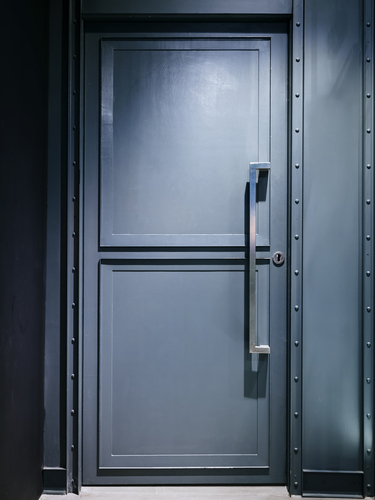hollow-core | solitary | staff-only | criteria
The prison door should be both strong and flexible. There are many designs for a prison door. But here we will discuss the top 3 main door designs for prisons.
1. Hollow-core metal doors
The advantages of hollow-core metal doors in prisons are well known to architects and designers. This type of construction has been used for correctional facilities around the world for over a century.
This type of prison door has security hinges and lock encasements that are accessible to inmates. Many other types of prison doors are made of continuously welded assemblies and cover plates, making repairs and maintenance difficult and expensive.
The hollow-core doors offer superior security without compromising on the aesthetic appeal.
Installation of hollow-core metal doors is vital for ensuring their proper performance. When selecting a provider, consider the following:
Detention-type hollow-core metal doors are designed to withstand the daily abuse of inmates. They are made from 14 or 12-gauge steel with a nominal thickness of 2″. Other important features of detention-type hollow metal doors include a lock, strike, and unique hardware preps.
The detention-type hollow-core metal doors should have a minimum thickness of 2″ and a side clearance of 1/8″.
The maximum security cells need to be at least 44 inches away from the exterior wall. An inspection corridor should separate the exterior wall from the maximum security cell. Maximum security cells cannot be directly accessible to the outside, including from windows and doors.
A prison-type facility can also have multiple levels of security, including maximum-security and medium-security. A prison must provide a secure environment for inmates and staff. If the prison-type facility has a maximum-security cell, then it must be separated by an inspection corridor.

2. Prison Door Designs: Solitary doors
Automatic doors are not a good replacement for jail doors in normal cells. They only serve their purpose when manually locked shut. This makes them vulnerable during riots. On the other hand, solitary doors can be opened by staff members only.
They have the added advantage of being hard to break into. This means that only staff members with the correct keys can access the cells. Solitary doors can also be used to improve security in prisons.
In the 1950s, solitary confinement made a tentative return to Alcatraz. Prisoners were kept in isolation on the ‘D block’ of the prison. They were kept in a cell called ‘the hole’. This cell is a featureless concrete room with a hole in the floor and no light.
Inmates were usually kept naked and without access to supplies and toiletries. Solitary confinement was revived by CIA investigations in the 1950s. Modern prison designs have made the practice easier to execute.
Correctional facilities are increasingly looking for design solutions that provide optimal privacy for inmates. These solutions must allow for discreet observation by staff while still affording inmates their personal space.
Moreover, inmate clinics need to be quiet and offer adjustable vision control. Excessive noise, especially in the prison setting, can trigger acute stress. Therefore, good design approaches minimize noise by employing sound-absorbing doors, windows, and even sound wave barriers.
The new trend in prison design is to build larger prisons while keeping the budget low. Architect Daniel Dominguez, who previously worked for Capita, is currently working at TP Bennett. In his career, he has worked on 20 prisons.

3. Prison Door Designs: Staff-only doors
Generally, there are two types of main door designs for prisons: regular and staff-only. Regular doors are used in areas where prisoners are allowed to go. But prisoners cannot enter areas that are marked as Staff Only.
Regular doors are cheaper and can be used for designated Staff Only areas. But not all areas of prison are appropriate for multiple. Kitchens and canteens do not work well with multiples, for example.
The Staff Door is the most common type of door design. It is weaker than the Jail Door but can be opened by all types of staff. Prisoners can go through the Staff Door if it is opened by a guard. Guards can also open the Staff Door for prisoners who wish to go to non-staff areas.
But staff-only prison door designs should be carefully crafted to prevent inmates from escaping unintentionally.
Prisons need staff rooms as well. A 10×10 room can house 300 staff and guards. It is also convenient to have multiple exits for staff members to move between buildings. This is essential to keep prison staff and prisoners from rioting and other misbehavior.
Also, prisons need to have staff rooms, so the rooms should have a drink machine and double sofas. You should keep in mind that staff members tend to move slower than active members.
Prisons should be designed with trauma in mind. Prison architects can draw inspiration from pioneering healthcare centers. Many of these institutions are explicitly designed to be trauma-sensitive.
In addition to providing care for inmates, they should also make the prison environment trauma-sensitive. This is where staff-only main door designs can make a significant difference.

Criteria for Selection of Prison Door Designs
When choosing the best doors for your prison, you need to take a few important considerations into account:
- First, you should consider how much traffic the prison has. Some prisons have large roads that are difficult to navigate through.
- Secondly, you must consider the speed of the doors. If the prison is too slow, it may need to install large road gates to prevent the flow of traffic.
- Lastly, you should decide what type of security you want for the prison.
